|
|
Family Life
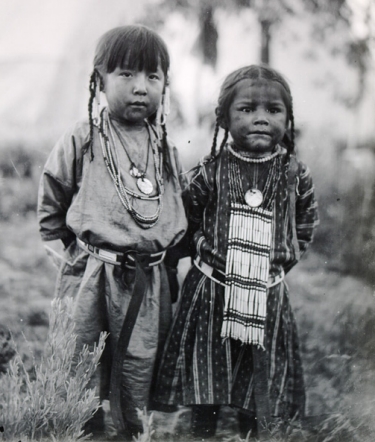
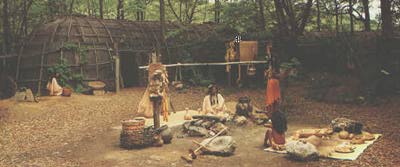
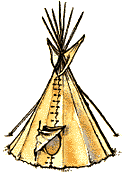
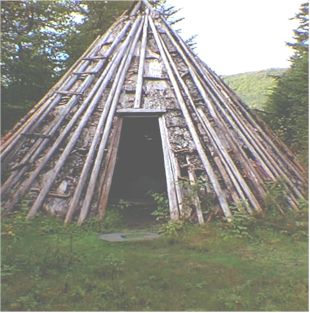

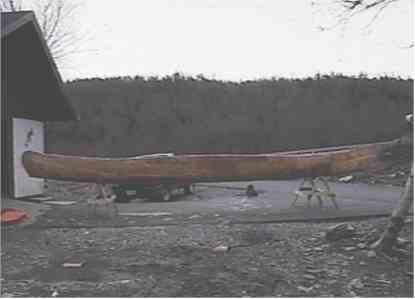
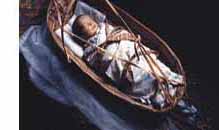
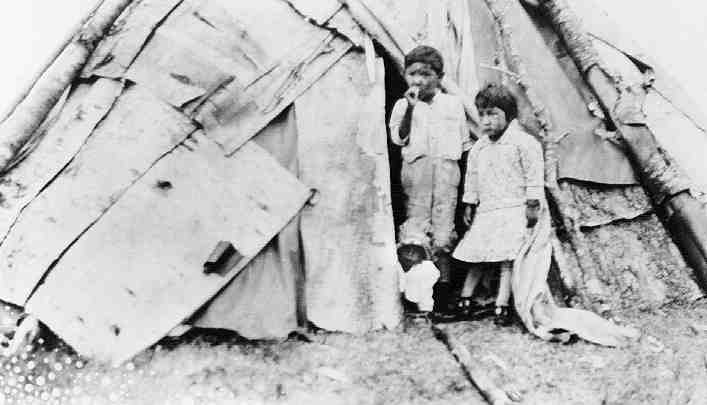
Glossary Bow and Arrow A weapon consisting of two parts; the bow is made of a strip of flexible material, such as wood, with a cord linking the two ends of the strip to form a tension from which is propelled the arrow; the arrow is a straight shaft with a sharp point on one end and usually with feathers attached to the other end.
The use of the bow and arrow for hunting and for war dates back to the Paleolithic period in Africa, Asia, and Europe. It was widely used in ancient Egypt, Mesopotamia, Persia, the Americas, and Europe until the introduction of gunpowder. Arrowheads were first made of burnt wood, then stone or bone, and then metals. Various woods and bones were used for the bow itself. However, it was not a powerful weapon until the invention of the compound, or composite, bow around 1500 b.c. on the steppes of Central Asia. A composite bow is made of various materials (wood, horn, sinew) glued together so as to increase their natural strength and elasticity. Bows and arrows were among the dominant weapons used by Assyrian chariots, Parthian cavalry, Mongol horsemen, and English longbowmen. At other times they have been used more as auxiliary weapons for massed infantry or cavalry.
The crossbow, although known in Roman times, was not widely used in Europe until the Middle Ages. In China, however, where it developed at the same time, the crossbow revolutionized warfare. A crossbow is a bow set on a stock. It fires missiles propelled by mechanical energy and released by a trigger. It could be more powerful than the ordinary bow and could fire arrows, darts, or stones. It was, however, slower to fire than the longbow and almost as difficult to wield; even the arbalest, a later crossbow, was clumsy and slow. By the end of the 13th cent. use of the crossbow had declined. At the battle of Crcy (1346) English longbowmen, firing from fixed positions, proved far more efficient than Genoese crossbowmen fighting for the French.
The longbow, which was in use in Wales in the 12th cent. became prominent in the Welsh Wars of Edward I in the late 13th cent. For the rest of that century, the English emphasized skill with the longbow; it was inexpensive, mobile, and easily adapted to a peasant army. Only in England did the longbow survive the introduction of gunpowder; it was superseded gradually by firearms. It was a powerful weapon, but it took great strength to pull and years of practice to master. The Chinese also developed a longbow, which proved much less effective than the English variety. The Asian bow, designed for use on horseback, was shorter and lighter than the English longbow and could be more rapidly fired. The Chinese later developed the repeating crossbow, an ingenious weapon that proved ineffective against repeating rifles in the First Sino-Japanese War.
Since bows and arrows are relatively easy to make and can produce a rapid rate of fire, they were used in warfare long after gunpowder was introduced, for primitive firearms required much time to load, were hard to manufacture, and often failed. In Japan and North America archery was very important culturally as well as militarily. See R. Hardy, The Longbow (1976); R. PayneGalway, Crossbow (1988). Bison A large hoofed mammal, genus Bison, of the cattle family. Bison have short horns and humped, heavily mantled shoulders that slope downward to the hindquarters. The European bison, or wisent, Bison bonasus, has a less luxuriant mane and beard than the American species, B. bison. The American bison is commonly called buffalo, although true buffalo are African and Asian animals of the same family. B. bison is characterized by a huge, low-slung head and massive hump; its legs are shorter than those of the wisent. Males may reach a shoulder height of over 5 ft (1.5 m), a body length of 9 ft (2.7 m), and a weight of 2,500 lb (1,130 kg). The winter coat of the American bison is dark brown and shaggy; it is shed in spring and replaced by a coat of short, light-brown fur. Bison graze on prairie grasses, migrating south in search of food in the winter. They formerly roamed in vast herds over much of North America, especially on the Great Plains, and were hunted by Native Americans for their flesh and hides. With the arrival of European settlers they were subjected to a wholesale slaughter that resulted in their near extinction. They were killed for their tongues, regarded as a delicacy, and shot for sport from trains. At the beginning of the 19th cent. there were over 60 million bison in North America. By the middle of the century the bison was extinct E of the Mississippi, and by 1900 there remained only two wild herds in North America, one of plains bison in Yellowstone Park, and one of the larger variety, called wood bison, in Canada. Protective laws were passed beginning at the end of the last century, and the bison population has since risen from a few hundred to over 20,000. The wood bison may have vanished as a distinct race through hybridization with the plains bison. Bison are classified in the phylum Chordata, subphylum Vertebrata, class Mammalia, order Artiodactyla, family Bovidae. See Tom McHugh and Victoria Hobson, The Time of the Buffalo (1972); Jerry N. Mcdonald, North American Bison (1981). Buffalo The name commonly applied to the American bison but correctly restricted to certain related African and Asian mammals of the cattle family. The water buffalo, or Indian buffalo, Bubalus bubalis, is found in S Asia. It is a large, extremely strong, dark gray animal, standing nearly 6 ft (180 cm) at the shoulder and weighing up to 2,000 lb (900 kg). Its widely spread horns curve out and back in a semicircle and may reach a length of 6 ft (180 cm). For many centuries it has been domesticated as a draft animal, but wild forms still exist in Borneo and herds descended from domesticated animals live in a wild state elsewhere. Water buffalo live in swampy areas and near rivers, where they wallow in the mud. Wild water buffalo are extremely fierce and have been known to kill fully grown tigers. The domestic forms are somewhat more docile. They are used throughout S Asia to pull plows and carts; they are of little importance as dairy animals, as their milk is scant. Their diet consists chiefly of grass. The anoa, Anoa depressicornus, also called dwarf buffalo or wood buffalo, is the smallest of the buffalo, standing only 40 in. (100 cm) high at the shoulder; it is found in the Celebes. Its slightly larger relative, the tamarou, Anoa mindorensis, is found in the Mindoro region of the Philippines. Both are forest dwellers. The large, fierce cape buffalo is found in Africa. Buffalo are classified in the phylum Chordata, subphylum Vertebrata, class Mammalia, order Artiodactyla, family Bovidae. See D. A. Dary, The Buffalo Book (1974). Leather Skin or hide of animals, cured by tanning to prevent decay and to impart flexibility and toughness. Prehistoric and primitive peoples preserved pelts with grease and smoke and used them chiefly for shoes, garments, coverings, tents, and containers. Today pelts are prepared for tanning by dehairing, usually with lime, followed by fleshing and cleaning. After tanning, leather is generally treated with fats to assure pliability. The practice of shaving leather to the required thickness was abandoned early in the 18th cent. after the invention of a machine that split the tanned leather into a flesh layer and a grain (hair-side) layer; skivers are thin, soft grains used for linings and for covering firm surfaces. Characteristic grains may be brought out by rubbing, as in morocco leather (goatskin), or may be imitated by embossing. Finishes include glazing, a high glaze being achieved by rolling with glass cylinders; coloring with stains or dyes; enameling or lacquering as for patent leather; and sueding, buffing with emery or carborundum wheels to raise a nap, usually on the flesh side. Russia leather, originally vegetable-tanned calfskin dressed with birch oil that imparted a characteristic odor and often dyed red with brazilwood, is a term now covering a number of variants. Rawhide is similar to parchment and is untanned. Cordovan, or Spanish, leather, a soft, colored leather made at Crdoba during the Middle Ages and often richly modeled and gilded, is imitated for wall coverings, panels, and screens. Leather is much used in bookbinding. Artificial leather, made since about 1850, was originally a strong fabric coated with a rubber composition or with a synthetic substance such as pyroxylin. Since World War II, materials made from vinyl polymers have far outstripped the earlier artificial leathers in commercial importance. Medicine Man Among Native Americans and other primitive peoples as far back as Paleolithic times, a sorcerer supposed to possess mysterious healing powers. Like the shaman and the African witch doctor, the medicine man was a specialist in the use of supernatural healing agencies. Usually the medicine man's functions were quite extensive, and he served not only as healer of bodily diseases but as tribal priest, with powers to inflict pain, promote fertility, and secure good hunting and fishing. Most Native Americans regarded illness as the visitation of some malignancy that had gained access to the body by either natural or supernatural meansthrough violation of a taboo or through the activities of a sorcerer from an enemy tribe. The function of the medicine man was to remove or cast out the illness from the patient by means of spells, charms, and sympathetic magic. Sometimes scientific or pseudoscientific methods were used, such as bloodletting, physical manipulation, application of herbs, or sucking out the malignancy from the patient's body. Moccasin Skin shoe worn by indigenous people of North America, excepting the sandal wearers of the Southwest area. There were two general types of moccasins, the hard-soled, which was used in the Eastern woodlands and the Southeast cultural areas, and the soft-soled, used in the Plains area. The hard-soled moccasin was made by sewing, with sinew thread, a rawhide sole to a leather upper piece; the soft-soled moccasin was one piece of soft leather with a seam at the instep and the heel. Boot or legging moccasins (sometimes reaching the hip) were worn from Alaska to Arizona and New Mexico, but they were generally part of the woman's costume. The moccasins of certain tribes were distinctive, and sometimes a moccasin track could indicate the tribe of the wearer. Moccasins were usually symbolically decorated with porcupine quills and, after the coming of the Europeans, with glass beads. Special moccasins were used for ceremonies such as the Iroquois adoption service, which required that a recruit put on Iroquois moccasins to indicate that he would follow Iroquois ways. Praying Indians The name for Native North Americans who accepted Christianity. Although many different groups are called by this name, e.g., the Roman Catholic Iroquois of St. Regis, it was more commonly applied to those Native Americans of E Massachusetts who were organized into villages by the Puritan missionary John Eliot. In 1674 there were seven principal praying townsHassanamesit, Magunkaquog, Nashobah, Natick, Okommakamesit, Punkapog, and Wamesit. Natick, founded in 1651, was the oldest. In King Philip's War (1675) the praying Indians were practically destroyed by the other Native Americans, who viewed them as traitors, and by the English, who thought they were secret allies of King Philip. From a population of 1,100 in 1674, they were reduced to 300 by 1680. Shaman Religious practitioner in various, generally small-scale societies who is believed to be able to diagnose, cure, and sometimes cause illness because of a special relationship with, or control over, spirits. Different forms of shamanism are found around the world; they are also known as medicine men and witch doctors. Shamanism is based on the belief that the visible world is pervaded by invisible forces or spirits that affect the lives of the living. Shamans are not, however, organized within full-time ritual or spiritual associations, as are priests. Shamans enter into trances through such methods as autohypnosis, the ingestion of hallucinogens, fasting, and self-mortification, during which time they are said to be in contact with the spirit world. Shamanism requires specialized knowledge or abilities, which are often thought to be obtained through heredity or supernatural calling. Among the Siberian Chukchee, one may behave in ways that Western clinicians would characterize as psychotic, but which they interpret as possession by a spirit demanding that one assume the shamanic vocation. Among the South American Tapirap, shamans are called in their dreams. In yet other societies, shamans choose their career: Native Americans of the Plains would seek a communion with spirits through a vision quest, while South American Shuar, seeking the power to defend their family against enemies, apprentice themselves to accomplished shamans. Shamans often observe special fasts and taboos particular to their vocation. Oftentimes the shaman has, or acquires, one or more familiars, usually spirits in animal form, or (sometimes) of departed shamans. Shamans can manipulate these spirits to diagnose and cure victims of witchcraft. Some societies distinguish shamans who cure from sorcerers who harm; others believe that all shamans have both curative and deadly powers. The shaman is usually paid for his services, and generally enjoys great power and prestige in the community, but he may also be suspected of harming others, and may thus be feared. Most shamans are men, but there are societies in which women may also be shamans. In some societies, the male shaman denies his own sexual identity by assuming the dress and attributes of a woman; this practice is rare but has been found among the Chukchee. See Mircea Eliade, Shamanism (tr. 1964); M. J. Harner, ed., Hallucinogens and Shamanism (1973) and The Way of the Shaman (1980); M. Taussig, Shamanism, Colonialism, and the Wild Man (1987). Tanning The process by which skins and hides are converted into leather. Vegetable tanning, a method requiring more than a month even with modern machinery and tanning liquors, employs tannin; its use is shown in Egyptian tomb paintings dating from 3000 b.c. Mineral tanning includes tawing, or alum tanning, another ancient method, and chrome tanning, the process most common today, based on the use of chrome salts and requiring only a few hours. Known as early as 1856, chrome tanning was first patented in the United States by Augustus Schultz in 1884. In oil tanning, or chamoising, the pelts are treated with fats and hung to dry; the leather is commonly napped on both sides and is very absorbent. The most recently developed tanning process employs artificial agents (syntans). Most heavy leathers, such as sole leather, are vegetable tanned; many light leathers are chrome tanned. The Native Americans of North America used the chamois method, employing the fat, livers, and brains of animals. Their tanned white buckskin was highly esteemed, especially for clothing, both by Native Americans and by colonial pioneers. In the tanyards of European settlers tanners used oak and hemlock bark; gallnuts; the wood, nuts, and leaves of the chestnut tree; and the leaves of sumac. Tepee A typical dwelling of Native North Americans living on the Great Plains. It was usually made by arranging tent poles into a conical frame and spreading skins, usually buffalo hide, tightly over it. An aperture was generally left at the top for smoke. The tepee was sometimes very elaborately decorated. It was highly mobile, being dragged by a horse when the tribe was on the move, and provided a strong shelter against the weather; it was thus an ideal dwelling for the nomadic Plains area tribes such as the Sioux and the Blackfoot. Because of the adaptability of the tepee to prairie life, Gen. Henry Sibley used it as a model for the tent that bears his name. See Reginald Laubin and Gladys Laubin, The Indian Tipi (1957, repr. 1971). Tribe [Lat., tribus : the tripartite division of Romans into Latins, Sabines, and Etruscans], a social group bound by common ancestry and ties of consanguinity and affinity; a common language and territory; and characterized by a political and economic organization intermediate between small, family-based bands, and larger chiefdoms. Some anthropologists believe that tribes developed when more stable and increased economic productivity, brought on by the domestication of plants and animals, allowed more people to live together in a smaller area. A tribe may consist of several villages, which may be cross-cut by clans, age grade associations, and secret societies; each of these cross-cutting institutions may, at different times and in different ways, perform economic, political, legal, and religious functions. Tribes are popularly believed to be close-knit and parochial, but some anthropologists now argue that they are flexibly defined communities of convenience. They have observed that there has been as much marriage between tribes as within, that members of many tribes may speak the same language and that members of any one tribe may speak different languages, and finally that all members of a given tribe rarelyif everunite in any important political or economic activity. Anthropologists have noted that every known tribe has been in contact with states, and suggest that tribal institutions may be adaptations to the greater state power, or direct consequences of the activities of states. Village Small rural population unit, held together by common economic and political ties. Based on agricultural production, a village is smaller than a town and has been the normal unit of community living in most areas of the world throughout history. Wickiup A temporary dwelling of nomadic Native North Americans. It is a framework of arched poles covered by brush, bark, rushes, or mats. The wickiup is found among Native Americans in Arizona, New Mexico, Utah, Idaho, and California. Sometimes other dwellings of tribes in this region are called wickiups even when made of more permanent materials. The name is also spelled wikiup. Wigwam Dwelling found among the Algonquian of the Eastern woodlands area of the United States. The wigwam was usually conical, arborlike, or domed. Some were small, accommodating a single family; others were large communal dwellings. They were covered with squares of bark, with reed mats, or with thatch. Sometimes the word is incorrectly extended to almost all Native North American dwellings including the earth lodge and sometimes even the tepee and the wickiup. |
|
|
|
|
 Native American Nations
Native American Nations
